Buyers Guide to Portable Heaters
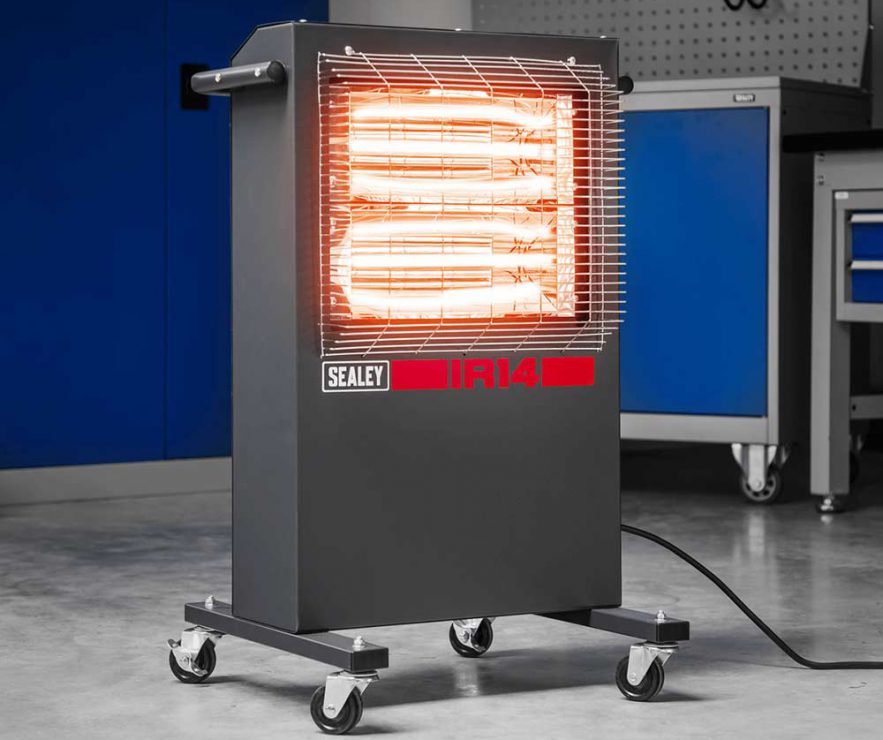
While the majority of domestic and commercial properties in the UK might have central heating, there are also a lot of working environments that don’t. Buildings like warehouses and workshops rarely have the luxury of a central heating system, and if you find yourself struggling through freezing conditions in the depths of winter then you’re probably going to have to find your own heating solution. You might also find yourself in the same situation – although on a much less industrial scale – if you’ve set yourself up a home office in the garden or like to spend long hours tinkering in the garage after work. Alternatively many people also like having portable heaters on hand for use around the home since they can be used to quickly bring up a room to a nice toasty warm temperature at the flick of a switch.
As the temperatures start to drop towards the end of the year, you might find yourself in no doubt that you need to invest in a new heater. When it comes to choosing one, however, it’s slightly more complicated since there are a wide variety of types and this is primarily because the requirements are going to be different depending on the type of space that needs to be heated up. Ideally you don’t want to spend a load of money running something that ends up being much too big and powerful for your needs, and likewise you don’t want to find yourself in the opposite situation with a heater than simply isn’t up to the job. To help make this purchasing decision a bit easier we’ve compiled this Buyers guide to Portable Heaters which will go through some of the key considerations.
Portable Heaters: Power Source
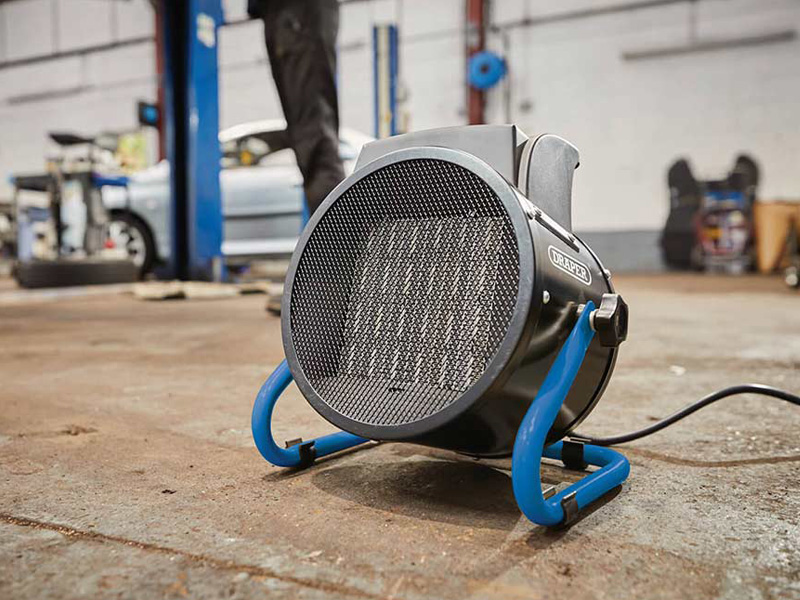
Broadly speaking, portable heaters can be split into two categories: electric heaters and fuel heaters. Electric heaters simply need to be plugged into an appropriate power socket, while fuel heaters will need a supply of fuel to keep them running – typically butane, diesel, paraffin or propane. However, its important to bear in mind that very few of them run purely on fuel alone. Most will also need to be plugged in to a mains socket to supply power to a motor and other electronic components. The main advantage of going down the fuel route however, is that they are also a lot more effective at heating a large area in a small amount of time, making them a powerful option which is better suited to large spaces.
240v Mains Electric Heaters
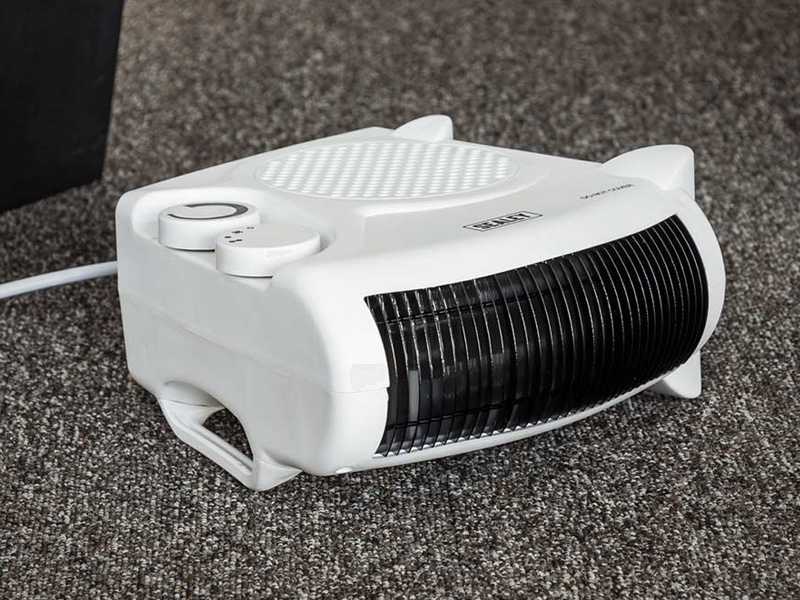
Most people will probably have encountered electric portable heaters before. At the cheaper end of the spectrum they are compact domestic grade appliances which sometimes get pulled out of the cupboard to provide a welcome heating boost during bitterly cold days, or as an emergency stand-in if the central heating is out of action. They can also be a convenient way of heating an individual room if you don’t need the whole central heating system to come on.
110v Site Heaters
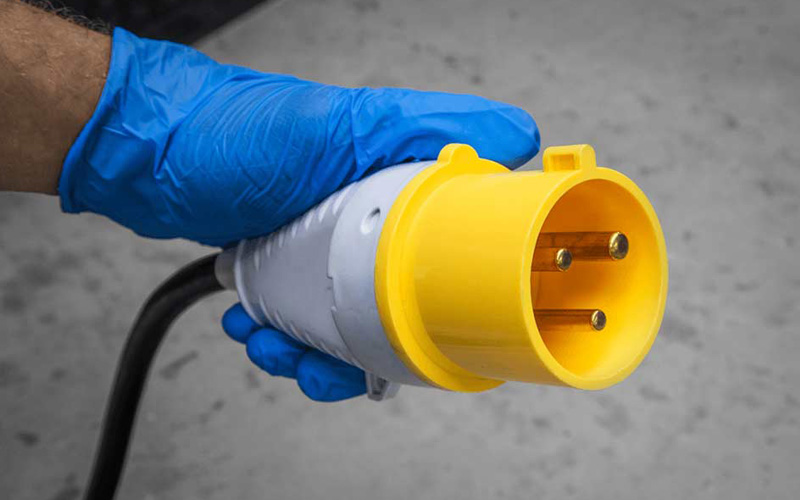
110v heaters are designed to be plugged into a 110v site transformer, making them suitable for construction sites and other working areas where standard 240v mains equipment has been prohibited. Bear in mind they are amongst the most demanding of appliances you can plug into a transformer since they can draw a lot of power, and they run continuously. For this reason you’ll need to make sure you’re plugging them into something which can definitely cope with the continuous load so check whether your transformer is suitable first.
Three-Phase Electric Heaters

At the other end of the scale you can also get electric heaters which can be plugged into the industrial three-phase power supplies which are available in some commercial facilities. As you’d expect these are capable of providing more powerful heating performance than a standard mains powered heater, although most are relatively compact units which are designed to be easily transported when required.
Diesel, Kerosene and Paraffin Heaters
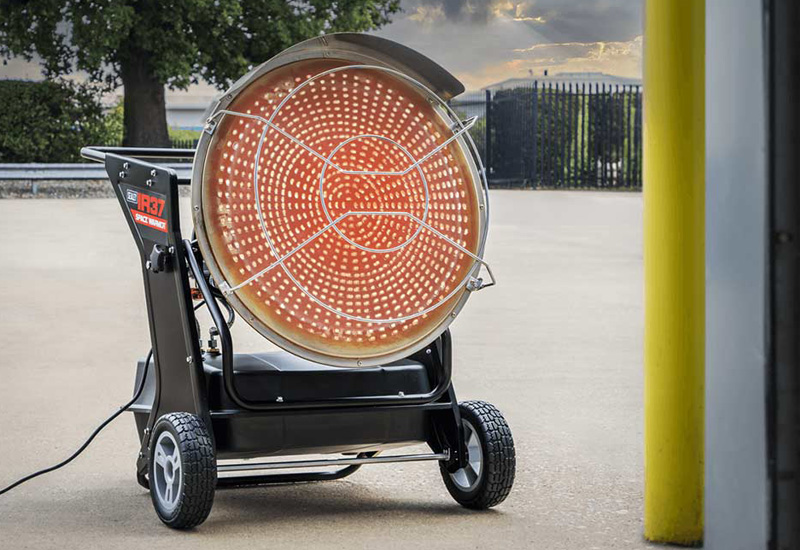
Fuel burning heaters should be chosen carefully as carbon monoxide fumes are a dangerous byproduct of most of them – meaning they should only be used in a suitably ventilated area. They are a popular choice for semi-open workspaces like garages, but you can also get indirect types which come with a length of ducting for channeling clean and fume-free heat into an adjacent area while allowing the heater itself to be situated elsewhere. Commonly you’ll find that many of these heaters can be run on more than one type of fuel (usually diesel/paraffin/kerosene) but it’s also standard that they’ll require an electric supply as well.
Gas Heaters
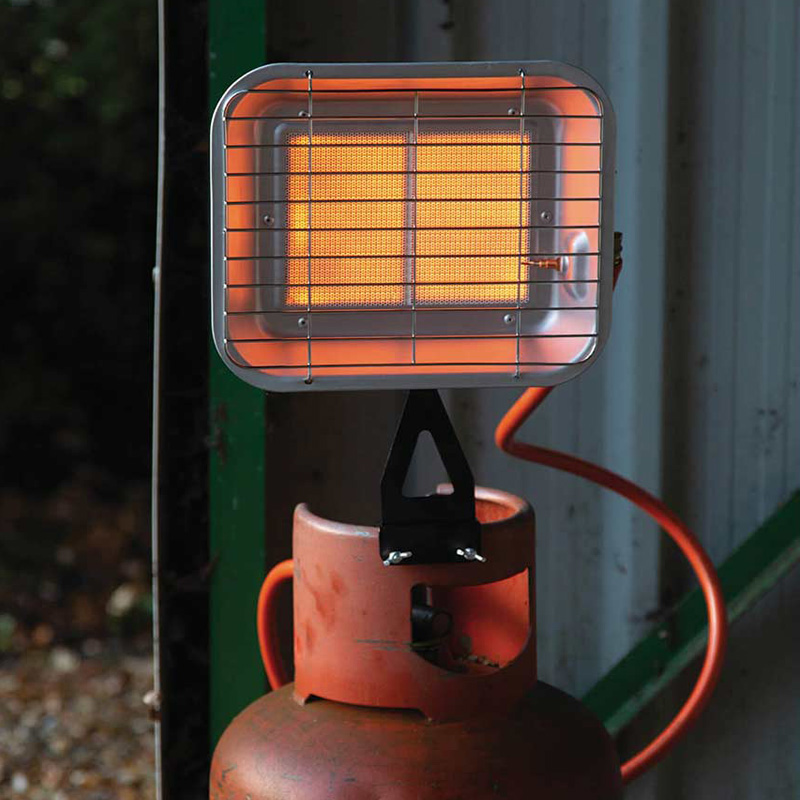
Most gas heaters are designed for use with propane or butane gas tanks, and some of them can be simply connected to the tank and fired up, meaning no electric supply is needed. These designs can therefore be used in locations where there is no mains power available, and running on portable gas tanks makes them ideal for mobile use as well. However not all gas heaters work like this and many of them do require electricity, although it is now possible to get models which draw the electricity needed from a power tool battery. As with the fuel burning types, these heaters can be dangerous in enclosed spaces and so they should only be used in adequately ventilated locations unless the manufacturer has specifically stated that they’re suitable for indoor use .
British Thermal Units (BTU)
For a quick way of getting an idea of how powerful any particular heater is, check to see if it has any figures quoted for BTU. Although the exact meaning of a single British Thermal Unit may be a bit hard to comprehend for most people (by its original definition, a BTU is equivalent to the amount of heat required to raise the temperature of a pound of water by one degree Fahrenheit) a simple rule of thumb is that 1 BTU is approximately the same amount of heat as would be generated by burning a kitchen match. While you might still struggle to imagine what several thousand kitchen matches equate to, these figures also allow you to get a better idea of the cost to performance ratio when comparing different models.
Types of Portable Heater
Everything is probably making sense so far, but here’s where it starts to look a bit more complicated. What’s the difference between a space heater, convector heater, infrared heater and a ceramic heater?
Ceramic Heaters
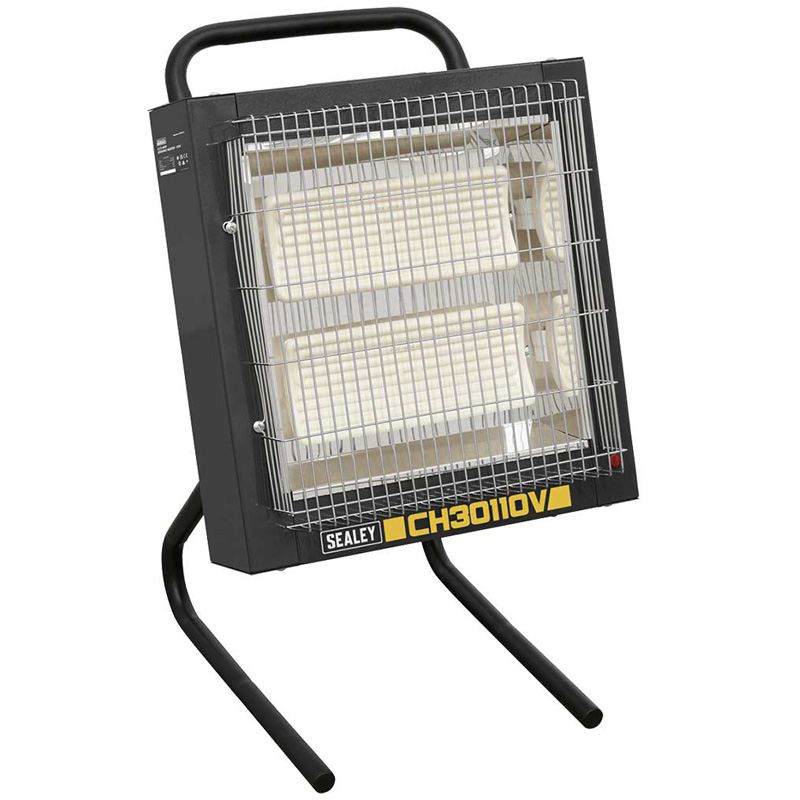
These types of heaters use ceramic heating elements which are quick to get up to full temperature and mean they can make a noticeable difference in a short space of time. The type of design affects how loud they are: some models use a reflective material behind the elements which helps to direct the heat outwards while others have an integrated fan which will create a background noise but helps to force the heat out further into the room.
- Ideal for: Home, Office, Industrial
- Quick to heat up
- Typically best for small to medium enclosed spaces
- Usually available for 240v mains sockets or 110v site transformers
Convector Heaters

Convector heaters are designed to heat up a whole room by creating a convection current of air which is continuously looped through the heater as it gets heated and rises to the top of the room before cooling and falling to the floor before being drawn in to the heater again. What this means is that they provide an even temperature throughout the room rather than concentrating the heat in one particular area.
- Ideal for: Home, Office
- Designed to provide even heat throughout a room
- Typically best for small enclosed spaces
- Usually available for 240v mains sockets only
Fan Heaters
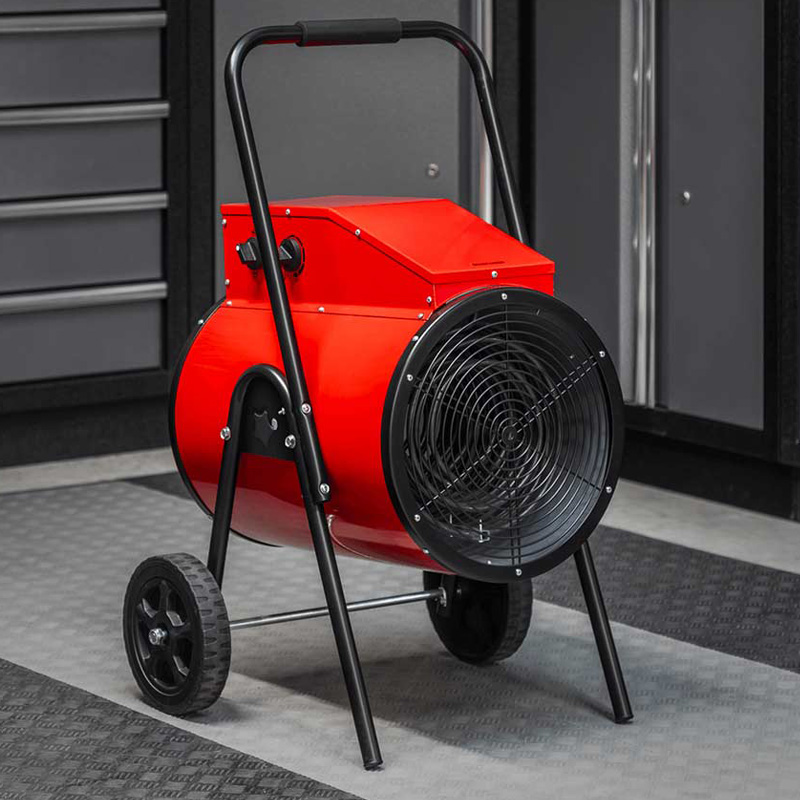
A fan heater uses an electric fan to blast warm air into the surrounding area and they are good for rapidly heating a targeted location. Another advantage is that some of these designs enable you to switch the heating element off and use the fan by itself for cooling purposes during hotter times of the year. The fans themselves can be quite noisy, especially on the bigger and more powerful models which tend to be designed with more industrial workspaces in mind.
- Ideal for: Home, Office, Industrial
- Delivers targeted heat to a specific area
- Can be loud
- Some models can also be used as cooling fans with the heater switched off
- Usually available for 240v mains sockets, 110v site transformers or 3 Phase supplies
Infrared Heaters
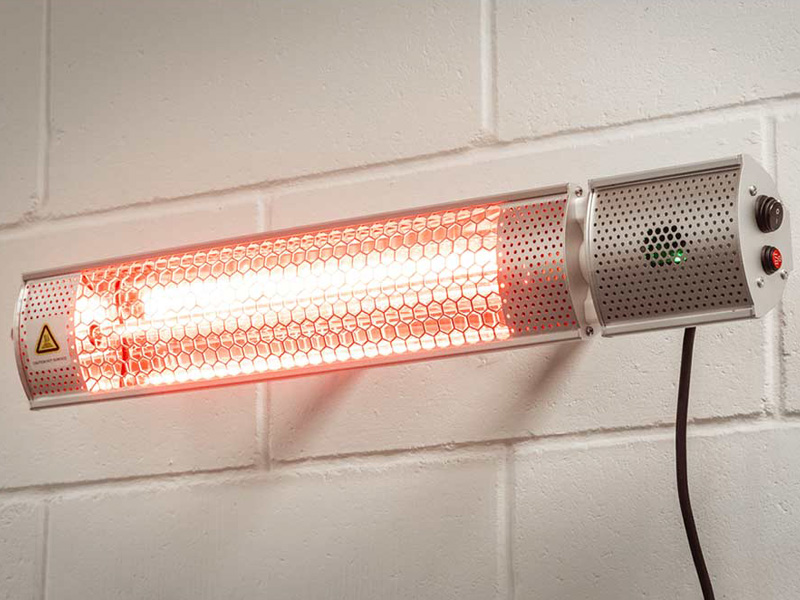
Infrared heaters operate in quite a different way to most of the other common designs. Rather than forcing volumes of heated air out into the surrounding area, they transmit heat via electromagnetic radiation – the same process by which much of the heat from the sun arrives on the earth. This makes them quiet and efficient, with most of the energy being put into them being directly converted into heat, but they are also ideal for many allergy sufferers since they don’t disturb the air in the room like a heater with a fan will. Even if you don’t suffer from allergies, many people simply find infrared heaters a lot more pleasant than other types of portable heaters since they produce a clean, dry heat with no condensation and no fumes.
Although they sound like they use space age technology they are available in a wide range of price points, with affordable types for the domestic market through to large models designed for commercial applications.
- Ideal for: Home, Office, Industrial
- Quiet operation
- Usually available for 240v mains sockets or 110v site transformers
Oil Filled Radiators
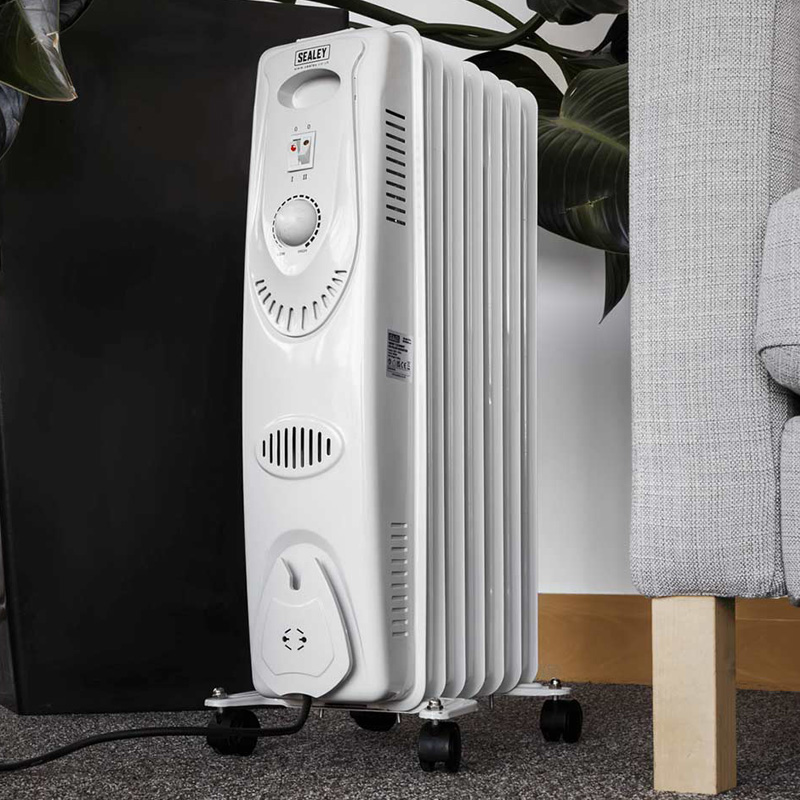
An oil filled radiator is much like a conventional central heating system that’s been condensed down into a single radiator which you plug into the wall. It has an integrated heating element and is filled with a type of oil which has been selected to retain heat after the heater has been turned off. The oil isn’t burned and doesn’t ever need to be topped up; it is sealed inside in the factory and doesn’t produce any fumes during use so oil filled radiators are not much different to standard radiators in practice.
- Ideal for: Home, Office
- Quiet
- Energy efficient: they will stay warm for a period after they’ve been switched off
- Usually available for 240v mains sockets only
Space Heaters

Space Heater is a term that can be a bit ambiguous, but in most cases what this refers to is a large fuel powered heater which is designed for industrial workspaces. The classic design looks a bit like a small jet engine on wheels and its unlikely that many people would consider one for a home or office environment, but bear in mind that these large fuel burning space heaters require adequate ventilation to be used safely and this does place some limitations on their use. An indirect space heater may be a potential solution for spaces that don’t have enough ventilation since with these designs the heater itself is situated in an exterior location and the hot air is piped into the required area without the harmful fumes included.

Purely electric space heaters also exist although these tend to be much smaller designs which could also be classified as fan heaters or ceramic heaters. In any event, since these heaters are all intended for heating larger spaces, you’ll find that the performance in terms of overall area (for example square metres) is usually provided in the specifications.
- Ideal for: Industrial
- Fuel powered models need adequate ventilation
- Typically best for large spaces
- Usually require fuel as well as a 240v mains supply
Portable Heater Safety
Whichever type of portable heater you choose, it is important to make sure it’s being used safely. Ensure that heaters are placed on stable surfaces in areas where you can readily access them if you need to switch them off, and well away from any combustible materials which could create a fire risk. Likewise you should never drape fabrics like clothes or blankets over them. As has been mentioned already, special attention should be given to any fuel burning heaters to make sure you’re not being exposed to harmful levels of carbon monoxide while using one, and a carbon monoxide alarm is a wise investment.
Many heaters will come with their own built in safety features such as thermal cut-out and tip over protection but make sure you read the manual thoroughly before using them so you know all the dos and don’ts of safe operation.
Where to Buy a Portable Heater
At Tooled-Up we stock a wide range of heaters for both domestic and workplace environments. You can view our main Fans & Heaters category here, or follow the links below to browse specific types.
Categories mentioned in this article:
